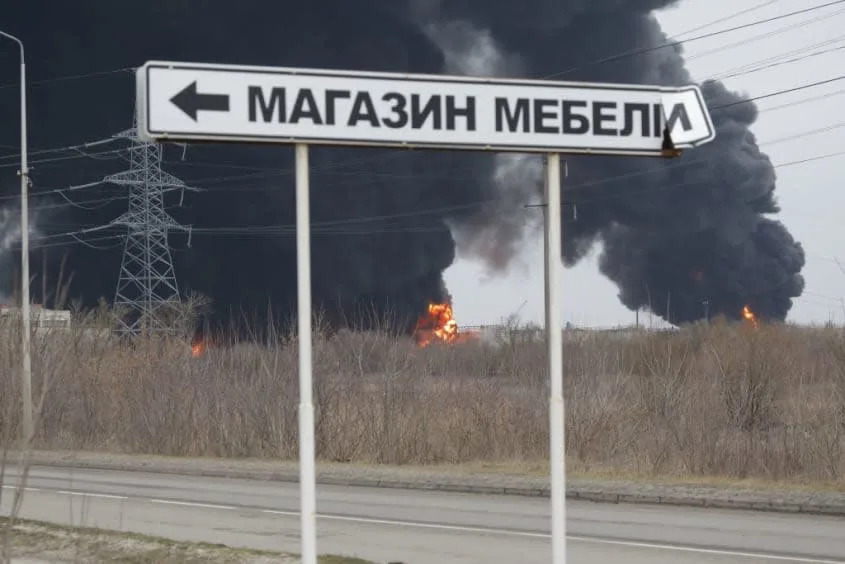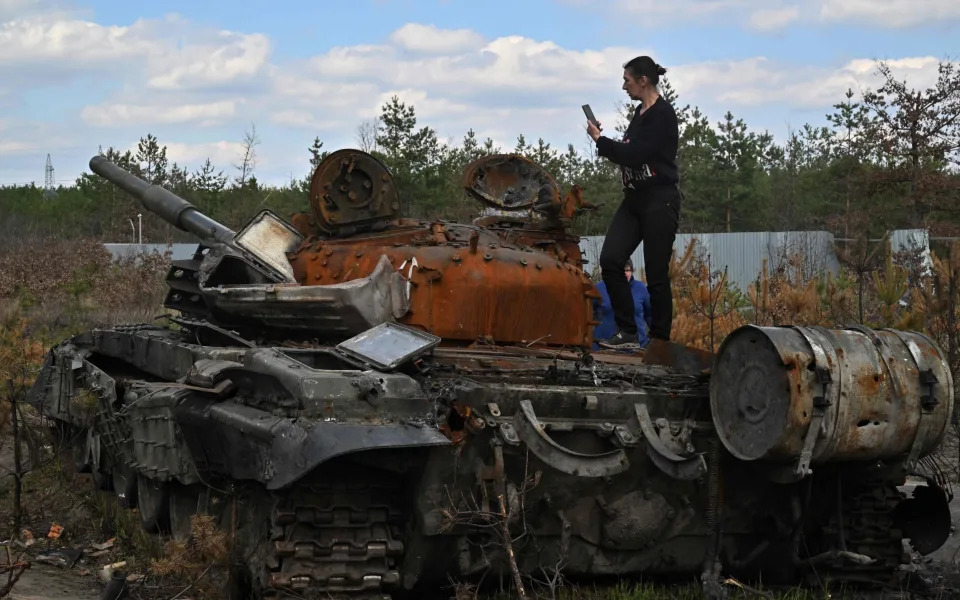Ukrayinska Pravda
General Staff: 2 Russian battalion tactical groups transferred from Russia to Izium; 3 Ukrainian towns captured
Olha Hlushchenko – April 27, 2022

ukrpravda@gmail.com (Ukrayinska Pravda)Tue, April 26, 2022, 11:12 PM
Russia has transferred 2 battalion tactical groups of the 76th Air Defence Division from Belgorod Region to the city of Izium, Kharkiv Region. Source: General Staff of the Armed Forces of Ukraine on Facebook, information as of 06:00 on Wednesday, 27 April According to the General Staff: “The enemy continues offensive operations in the Eastern Operational Zone in order to establish full control over the territory of Donetsk and Luhansk Regions and to maintain a land corridor with occupied Crimea.
The occupying forces are most active on the Slobozhanskyi and Donetsk fronts. The enemy is taking measures to replenish the military equipment of those units that suffered losses during hostilities. In particular, equipment is being transferred from storage in ammunition depots and at district military bases. Transportation of equipment to the territory of Ukraine is usually carried out by rail.”
Details: Russian occupying forces continued carrying out missile strikes on residential neighbourhoods on the territory of Ukraine. In particular, Russian troops continued air bombing and shelling Kharkiv’s infrastructure from artillery on the Slobozhanksyi front. On the Izium front, units from the 1st Guards Tank Army and the 20th Guards Combined Arms Army of the Western Military District, the 35th Combined Arms Army and the 68th Army Corps of the Eastern Military District, and Airborne Troops continue an offensive on Barvinkove.
Russian troops captured the town of Zavody and its outskirts to the northeast of Velyka Komyshuvakha. Two battalion tactical groups of the 76th Air Defence Division of Airborne Troops have been transferred from the territory of Belgorod Region to the city of Izium in order to increase the presence of Russian troops there. Russian troops also deployed 2 missile brigades with Iskander-M Mobile Ballistic Missile Systems in Belgorod Region.
On the Donetsk front, Russian troops are conducting active operations along almost the entire line of contact. Their main efforts are focused on offensive operations on the Sievierodonetsk, Popasna, and Kurakhiv fronts in order to establish full control over Popasna and Rubizhne and to advance the offensive on Lyman, Sievierodonetsk and Sloviansk.
On the Lyman front, Russian troops have established control over the town of Zarichne and carried out assault operations on the town of Yampil. On the Sievierodonetsk front, Russian occupation forces have captured the town of Novotoshkivske, and are conducting an offensive on the towns of Nyzhnie and Orikhove. In Mariupol, Russian troops are shelling and blocking Ukrainian troops at the Azovstal plant. In the city, the occupying soldiers continue to carry out “filtration” measures against the civilian population.
On the Pivdennyi Bug and Tavriia fronts, the enemy is deploying its available forces to maintain the previously occupied frontiers and to fire on the positions of Ukrainian troops. On the Mykolaiv, Kryvyi Rih and Zaporizhzhia fronts, Russian troops attempted to improve their tactical position by regrouping units, reinforcing weapons supplies and conducting air reconnaissance.
Russia deployed units of Russian Guards to carry out “filtration” measures in the districts of Kyselivka and Stanislav in Kherson Region. On the Tavriia front, units of Russian troops are fitting out their positions and replenishing reserves. There are no significant changes on the Volyn, Polissia and Siverskyi fronts.
Seven air targets were shot down by Ukrainian soldiers on 26 April: a Su-25 plane, a Ka-52 helicopter, 3 operational-tactical UAVs and 2 cruise missiles. In Donetsk and Luhansk Regions alone, 9 Russian attacks have been repulsed in the past 24 hours; 9 Russian tanks, 11 artillery systems, 4 units of special and 17 units of armoured equipment, 3 units of special engineering equipment and 16 units of automotive equipment, 4 fuel tanks, and 1 anti-aircraft system were destroyed.







